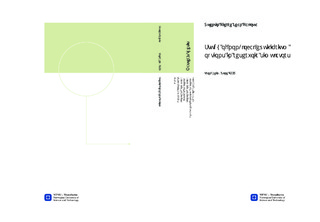Study of non-local equilibrium options in reservoir simulators
Master thesis
Permanent lenke
http://hdl.handle.net/11250/240004Utgivelsesdato
2013Metadata
Vis full innførselSamlinger
Sammendrag
AbstractThe recent IT improvements in areas such as CPU speed, memory, parallel computing and programming languages have allowed more complex physical models to be created for reservoir simulators. One of the issues that is still not fully resolved is the non-local equilibrium. Indeed, it is not possible to model subgrid heterogeneities causing the thermodynamic phase equilibrium between oil and gas to not be reached at the coarse scale: we can not reduce the scale of the grid enough because it will take too much computational time. Thus, we developed new models in Total's In-House Research Reservoir Simulator (IHRRS) for both Black-Oil and compositional cases. We focused on two different topics: the delay of vaporization and dissolution of light and heavy components as well as the underestimation of residual oil saturation to gas flooding. Indeed, even if the oil is not able to move due to its saturation being below oil-to-water and oil-to-gas residual saturation, unless restrictions are applied it keeps vaporizing into the fresh gas during simulation, which is not physical due to trapped oil in dead-end pores.We implemented local relaxation models on Rs and Rv in IHRRS, materialized in ECLIPSE by keywords DRSDT and DRVDT. Then, we have adapted them to compositional simulations by applying the relaxation to Ki instead of Rs and Rv. Afterwards, we made a new model assuming that equilibrium is instantaneous but dependent on oil saturation for both Black-Oil and compositional cases, materialized in ECLIPSE 100 by the keyword VAPPARS. We extended this model, allowing it to prevent oil from vaporizing into the gas phase if the saturation is below a defined value. In miscible or nearly-miscible gas flooding compositional simulation, it is possible to use alternative methods, such as alpha-factors, but it is quite complicated to compute the coefficient tables when it comes to non-miscible fluids.We benchmarked the results given by IHRRS with Eclipse for the relaxation models on Rs and Rv, as well as for the oil-saturation-depend Black-Oil equilibrium model. Then, we created equivalent 2-components data sets for both Black-Oil and compositional simulation. We used it to benchmark the new compositional models in IHRRS. Finally, we compared the results given by our new compositional model to ensure a non-zero residual saturation to gas flooding with alpha-factors or SOR in ECLIPSE 300.
